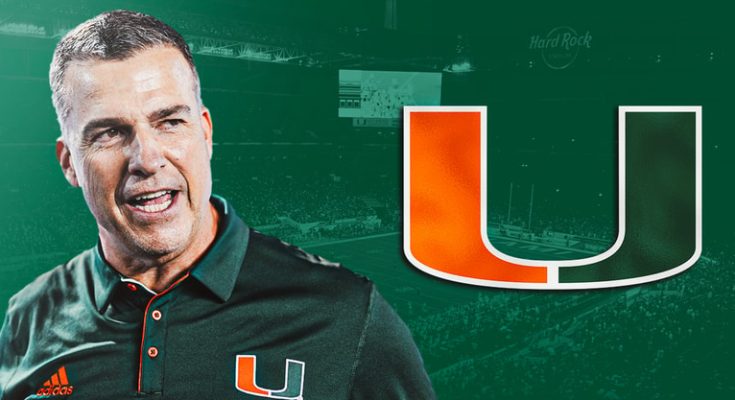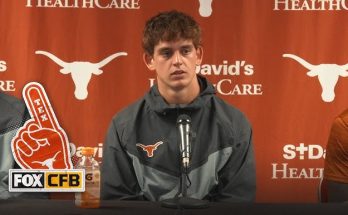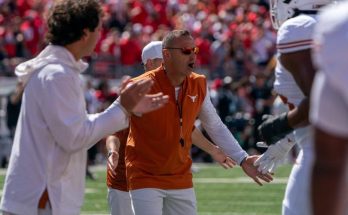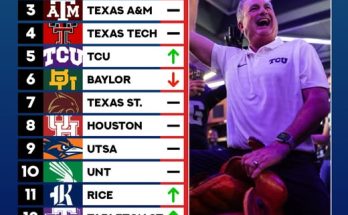The University of Miami has long been one of the most storied programs in college football, a brand that reverberates beyond Coral Gables and echoes through the annals of gridiron history. From the swaggering dominance of the 1980s to the early 2000s powerhouses, the Hurricanes carved out a reputation as a pipeline to the NFL and a school that personified toughness, speed, and excellence. However, in recent years, the program found itself adrift—underachieving, losing ground on the recruiting trail, and seemingly stuck in a perpetual cycle of coaching changes and unmet expectations. All of that began to shift with the arrival of Mario Cristobal, a native son of Miami and a two-time national champion as a player with the Canes. Since taking the reins in December 2021, Cristobal has injected a new sense of purpose into the program, particularly in the area that matters most in the long run: recruiting.
Cristobal’s approach to recruiting is anything but passive. It is rooted in tireless work ethic, elite talent evaluation, relationship-building, and an uncompromising belief that Miami should recruit with the same swagger and ambition that once made it a dynasty. What separates Cristobal from many other head coaches in the country is his hands-on approach. He doesn’t delegate recruiting. He lives and breathes it. He’s often on the road, visiting high schools, attending 7-on-7 tournaments, and hosting blue-chip prospects on campus himself. The tone he sets is unmistakable: Miami isn’t here to be average. It’s here to reclaim its seat at the college football elite table.
The Hurricanes’ recent recruiting success is no accident. The 2023 class ranked top 10 nationally, headlined by five-star offensive tackles Samson Okunlola and Francis Mauigoa, a symbolic shift in trenches-first recruiting. For years, Miami had recruited speed and skill but lacked the physicality on the offensive and defensive lines to compete with SEC powerhouses. Cristobal, a former offensive lineman himself, understands that no championship run can begin without dominating at the line of scrimmage. And so, he prioritized beef up front. Those two signees weren’t just victories on paper; they signaled to the rest of the nation that Miami could beat Alabama, Georgia, and Ohio State for premier talent when it mattered.
Recruiting in the NIL era has introduced complexities that didn’t exist a decade ago, but Cristobal and Miami have navigated that terrain deftly. With the support of billionaire boosters and structured collectives, Miami has become competitive in NIL negotiations while still focusing on culture fit and long-term development. The program hasn’t turned into a pay-for-play free-for-all. Instead, it has used NIL as a tool to reward loyalty, attract elite talent, and keep South Florida’s best at home. This balance is delicate, but Cristobal has managed it with both conviction and foresight.
In South Florida, the competition for talent is relentless. The Miami metropolitan area is arguably the richest high school football talent pool in the country. Programs like St. Thomas Aquinas, Miami Central, Chaminade-Madonna, and Northwestern churn out Power Five-level athletes year after year. For over a decade, the Hurricanes allowed that talent to slip away—to Alabama, Florida State, LSU, Clemson, and others. Under Cristobal, the trend has started to reverse. He has prioritized local recruiting, aiming to make Miami-Dade, Broward, and Palm Beach Counties the foundation of each class. His message to local prospects is simple but powerful: stay home, win championships, and build a legacy.
To back that message up, Cristobal has built one of the most respected recruiting staffs in the nation. Names like Alex Mirabal, Kevin Beard, and Jason Taylor have lent credibility and firepower to Miami’s efforts. Beard, a former Miami wide receiver, brings both passion and relatability to the role. Taylor, a Hall of Famer and defensive line coach, has already proven his ability to develop and recruit at a high level. These are not passive recruiters—they’re elite communicators and developers who understand what it means to play at Miami and what it takes to win big. This matters deeply to recruits and their families. In today’s recruiting world, relationships and development matter as much as logos and trophies.
Cristobal’s blueprint doesn’t just rest on the shoulders of five-star athletes. He’s also looking for the hungry three-star player with upside, the undervalued recruit who just needs the right system and support to thrive. It’s a philosophy reminiscent of the earlier Miami dynasties, where under-the-radar players blossomed into stars. Jimmy Johnson, Butch Davis, and Dennis Erickson thrived on this approach—finding the right blend of stars and sleepers, then coaching them into greatness. Cristobal is reviving that formula with a modern twist: combining evaluation-driven recruiting with data analytics and personalized development plans.
The 2024 class saw the Hurricanes surge again. Landing four-star quarterback Judd Anderson early in the process was pivotal. Though not as highly rated as some national passers, Anderson fit what Cristobal and offensive coordinator Shannon Dawson were looking for: leadership, arm strength, mobility, and toughness. Building around a quarterback early gives a class cohesion, and Anderson became a vocal peer recruiter. Following him were high-ceiling prospects like edge rusher Marquise Lightfoot, safety Zaquan Patterson, and receiver Joshisa Trader—players who bring both athleticism and position versatility. These were not just big gets—they were tone-setters, and they reflected Miami’s national reach.
Miami’s return to elite recruiting is not merely about rankings. It’s about reshaping the entire program’s identity. Cristobal doesn’t want temporary success or an occasional 10-win season. He wants Miami to be consistently in the College Football Playoff conversation. That means stacking elite classes, year after year, and creating internal competition that raises the standard. At programs like Alabama and Georgia, second-stringers could start at 90% of other schools. That’s the level Cristobal envisions. He wants depth. He wants accountability. He wants iron to sharpen iron.
The transfer portal has also played a strategic role. Cristobal has been selective, targeting high-upside additions who can address immediate needs without sacrificing the culture being built. The additions of players like cornerback Jaden Davis from Oklahoma and defensive tackle Branson Deen from Purdue in past cycles were emblematic of that approach—smart, experienced, coachable players who raise the locker room standard. Rather than becoming portal-dependent, Miami has used it to supplement and stabilize the roster.
Cristobal also understands that recruiting success has to translate into on-field results. No one cares how many stars your signees have if you’re not winning games. That’s why the 2024 and 2025 seasons are so critical. Miami must take a step forward—not necessarily into playoff territory immediately, but into 9–10 win territory. A strong showing on the field will validate the recruiting message. Recruits want to see that the vision is real. They want to see Miami beat Florida State, challenge Clemson, and dominate the ACC. The fan base wants that too. Patience is thinner in Coral Gables than in other programs. But Cristobal knows this, and he welcomes the pressure.
One of the often-overlooked elements in Miami’s resurgence is the investment in infrastructure. Since Cristobal’s hiring, the university has poured resources into facilities upgrades, nutrition programs, academic support, and mental health services. The \$40+ million Carol Soffer Indoor Practice Facility was just the beginning. These upgrades are critical in attracting top talent. Kids want to see that a program is serious about development—not just on the field but off it as well. Parents want to know their children will be safe, cared for, and given every tool to succeed. Cristobal’s holistic pitch goes beyond football, and it’s landing with recruits and their families.
Of course, challenges remain. Florida and Florida State are recruiting at a high level too. Georgia, Alabama, and Texas continue to poach from South Florida. The competition is fierce, and there are no guarantees in college football. But Miami has a fighting chance now because it has an identity. It has alignment between the administration and the football staff. It has a head coach who believes that this program can once again become the envy of college football. And perhaps most importantly, it has momentum.
Recruiting classes under Cristobal are not just about filling depth charts. They’re about changing the culture, the expectations, and the long-term trajectory of a proud but humbled program. The message is clear: Miami is no longer content to play catch-up. It is building brick by brick, player by player, into something formidable.
With several five-star targets in their sights for the 2025 class—including players like wideout Jaime Ffrench, safety DJ Pickett, and offensive tackle Solomon Thomas—the Hurricanes have a real shot to put together another top-five class. It will require closing power, development, retention, and results. But Cristobal is unrelenting, and his staff mirrors that energy. Miami may not yet be all the way back, but it is undeniably on its way. The process is grueling, the competition unforgiving, and the road long. But under Mario Cristobal, the U is fighting with purpose again—and this time, it just might stay.



